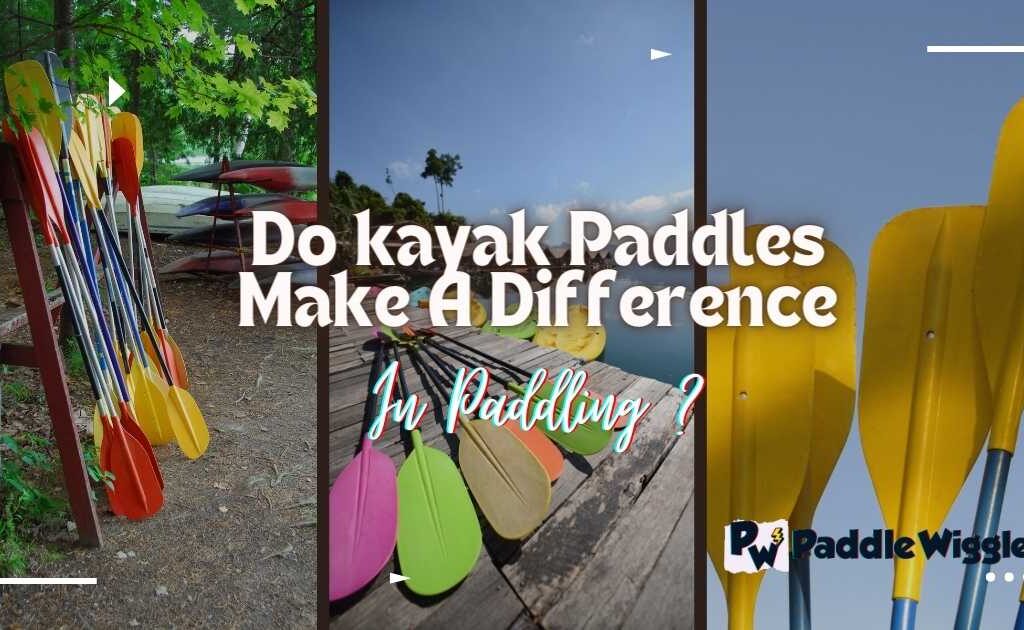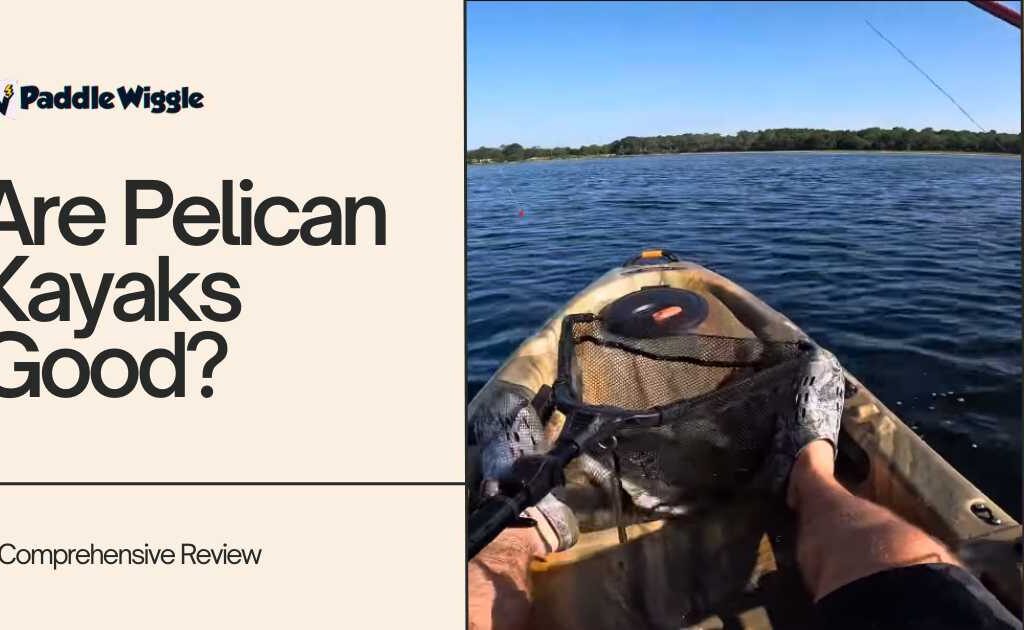Kayaking is a thrilling water sport enjoyed by people of all skill levels. But the type of kayak you choose can make a big difference in your paddling experience, whether you’re exploring calm lakes, gentle rivers, or challenging rapids.
The two main types of kayaks are inflatable and hardshell kayaks. Many people wonder if inflatable kayaks are harder to paddle than hardshell ones.
But are inflatable kayaks harder to paddle? The answer is yes; inflatable kayaks are more challenging to paddle than hardshell kayaks. However, this depends on factors like the kayak’s design, the water conditions, and your paddling skills.
Interestingly, many paddlers find inflatable kayaks easier due to their remarkable stability and exceptional maneuvering capabilities. These features provide a sense of confidence and control while gliding through the water.
In this comparison, we’ll explore the key factors that impact paddling efficiency, focusing on their performance. We aim to help you understand which type of kayak best fits your preferences and needs.
Contents
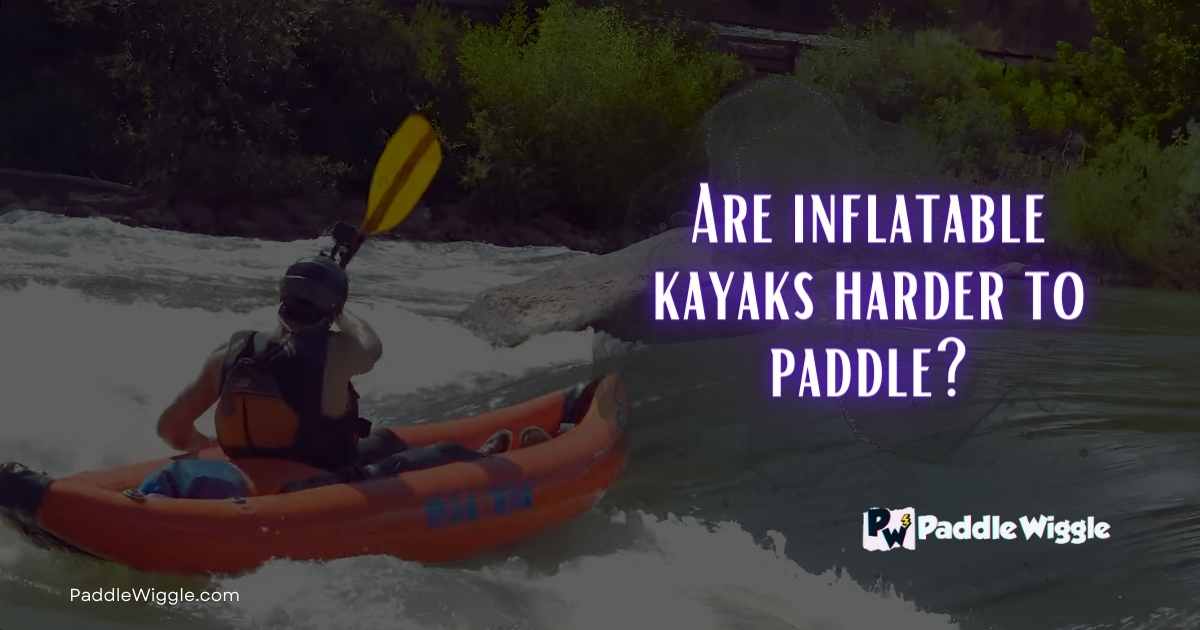

Why Inflatable Kayaks Are Harder To Paddle Than Hard Kayaks?
Inflatable kayaks are harder to paddle than hardshell kayaks because of how they are made. Hardshell kayaks have smooth shapes that help them move easily in the water. While inflatable kayaks may have flatter bottoms, making them less stable and harder to steer.
Even though inflatable kayaks have improved and are convenient to store and carry, their design and materials still make them a little more difficult to paddle than hardshell kayaks.
Let’s explore a few more reasons why they are a bit harder than hard kayaks:
Flexibility and Shape
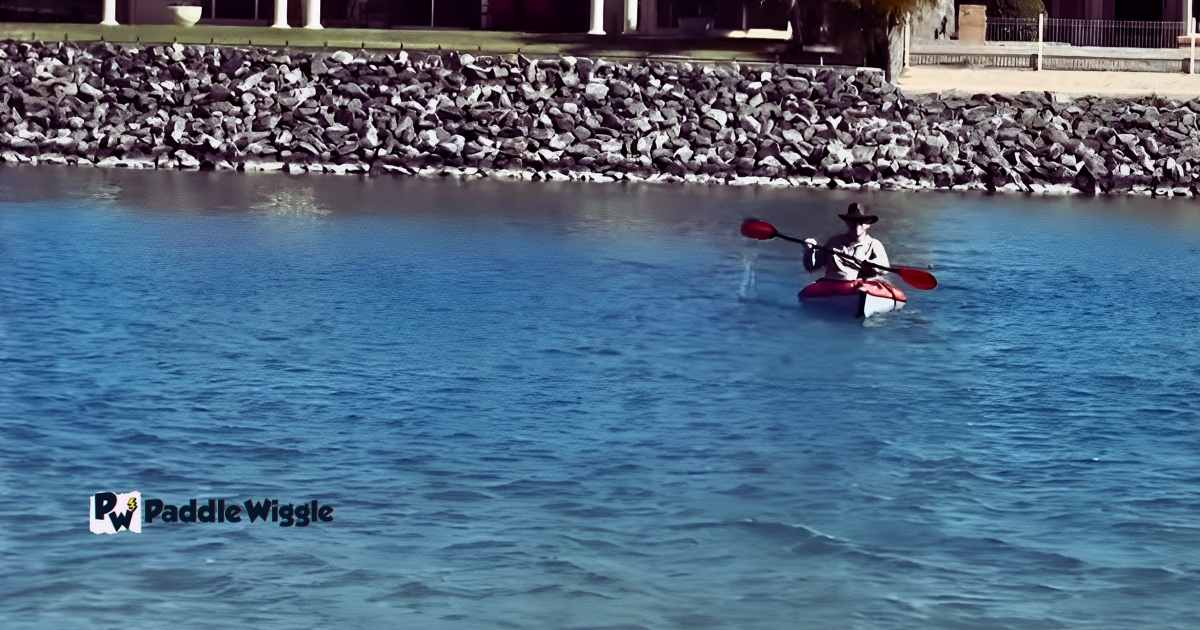

Inflatable kayaks are made from flexible materials. These can cause some bending or “give” when you paddle. This flex absorbs some of your paddling energy instead of propelling the kayak forward efficiently. In contrast, hardshell kayaks have a rigid structure that transfers more of your paddling energy into moving the kayak forward.
Drag and Resistance
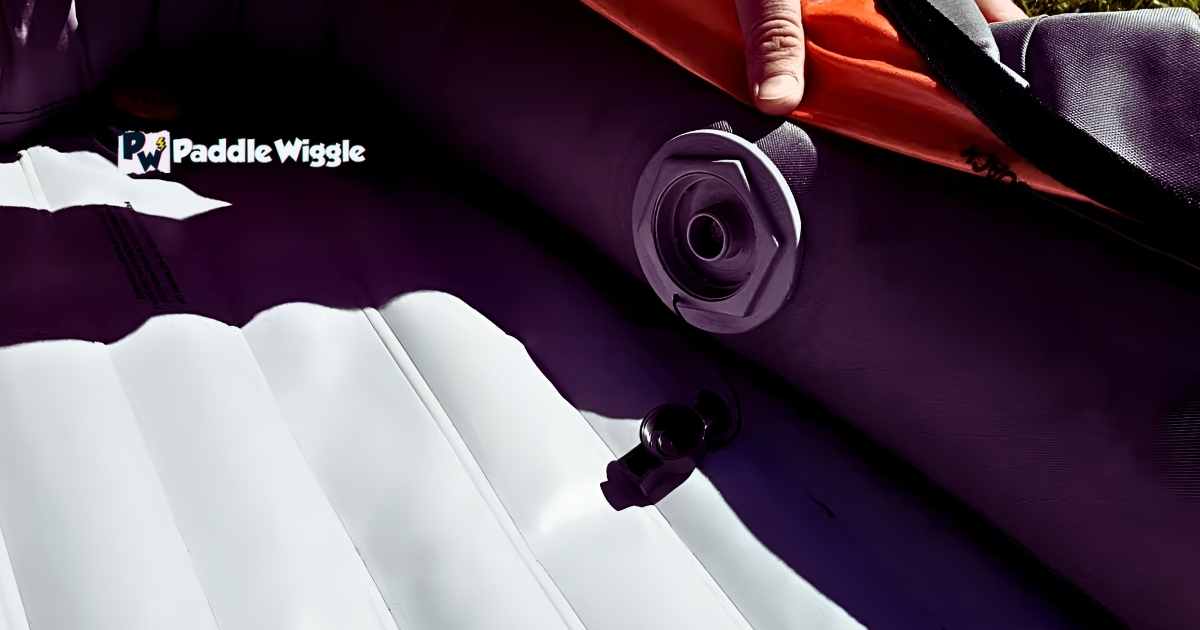

Inflatable kayaks usually experience more drag and water resistance compared to hardshell kayaks. The seams and air chambers of inflatable kayaks create an additional surface area, making them slower in the water. This added resistance requires more effort from you to maintain speed and keep the kayak moving.
Paddle Control
Inflatable kayaks can be a bit challenging to control with your paddle. This is because they are made from flexible materials. This can make it harder to get the kayak to respond exactly how you want when you paddle.
On the other hand, hardshell kayaks are rigid, so they respond more quickly and directly to your paddle strokes. This makes them easier to maneuver in the water.
Paddling efficiency of an Inflatable kayak
Paddling efficiency is essential in finding out why some inflatable kayaks are harder to paddle. Let’s take a closer look at their paddling efficiency and the key differences that influence it:
Hardshell kayaks offer better speed and tracking
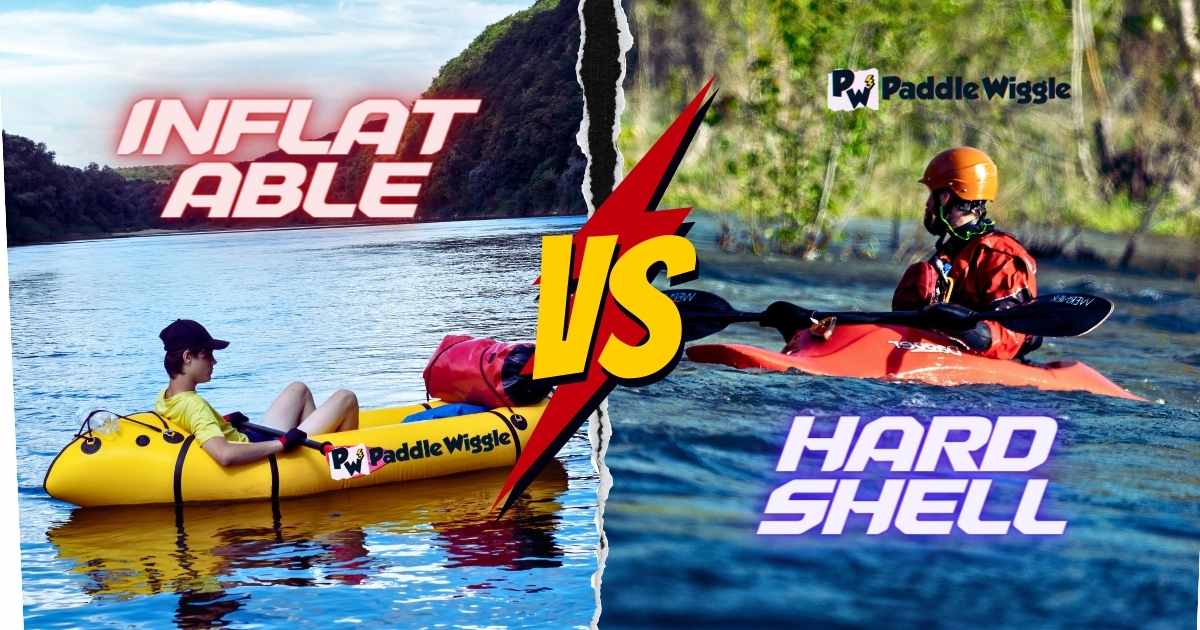

Speed and Tracking Hardshell kayaks are faster and go straighter in the water. Their strong hulls glide smoothly, making them great for long trips and rough waters like ocean waves or fast rivers. They stay on course well, so you don’t have to change direction as often, making paddling easier.
High-Quality Inflatable Kayaks with enhanced paddling efficiency
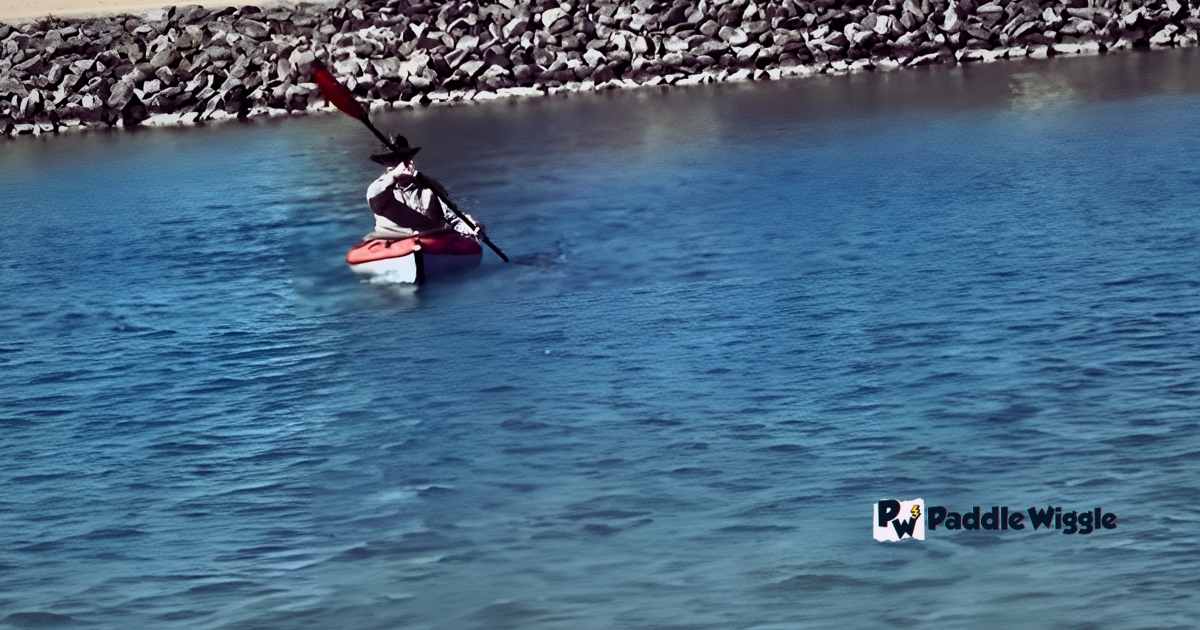

Hardshell kayaks are faster and easier to steer. But some inflatable models are designed to be as efficient as hard kayaks.
Manufacturers have added strong materials and special features like skeg systems to make inflatable kayaks more stable and easier to steer. These improvements help you paddle better and make paddling easier.
While they might be slower than hardshell kayaks, these special inflatable kayaks are great for people who want a portable and convenient kayak without losing too much efficiency.
Gliding Efficiency
Hardshell Kayaks are Better Hardshell kayaks can go longer distances with less effort because of their strong hulls. This makes them great for long trips or adventures. Plus, you won’t get as tired on those long journeys, which makes paddling more efficient.
How to make an inflatable kayak more efficient for paddling
Inflatable kayaks can be a bit trickier to paddle than hardshell kayaks, but fear not! You can easily improve the paddling efficiency of your inflatable kayak.
By implementing a few simple tips and tricks, you can make your inflatable kayak more efficient and enjoyable on the water.
Let’s explore them:
Optimize Airflow for Efficiency
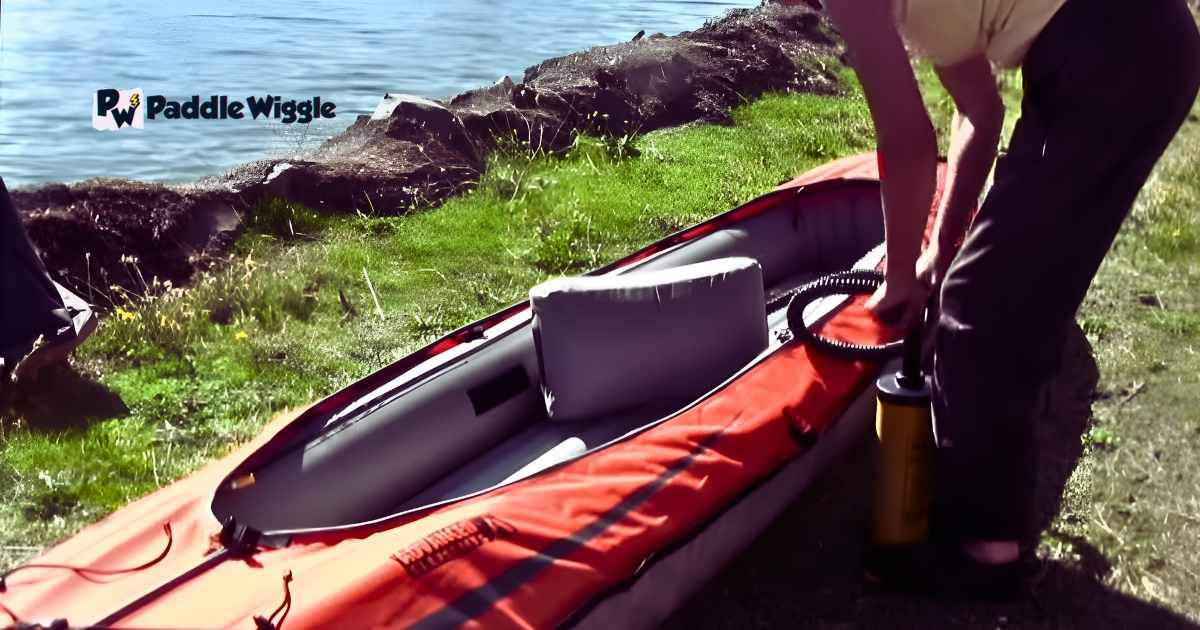

Did you know that airflow plays a role in how your inflatable kayak moves through the water? It’s true! To optimize airflow and reduce resistance:
- Try to keep your kayak’s surface as smooth as possible.
- Avoid attaching too many accessories or gear on the kayak’s exterior, as these can create drag.
- Organize your belongings inside the kayak instead to maintain a sleek profile.
This way, you’ll cut through the water more efficiently and easily glide.
Check the Seams
One of the essential aspects of inflatable kayak efficiency is ensuring the seams are in good condition. Regularly inspect your kayak’s seams for wear, tear, or leakage. If you notice any issues, fix them promptly to prevent water from seeping into the kayak.
A well-maintained kayak with secure seams will minimize resistance, making your paddling experience smoother and more efficient.
Reduce Extra Weight
Keeping your inflatable kayak lightweight can significantly affect how easily it glides through the water. Be mindful of the items you bring along on your paddling adventures.
So consider packing only the essentials and leaving unnecessary items behind. Opt for lightweight gear and equipment to reduce the overall weight of the kayak. A lighter load means less effort is required to paddle, allowing you to cover longer distances easily.
Use Proper Paddle Length
Choosing the right paddle length is vital for efficient paddling. If your paddle is shorter, it can make paddling more challenging and less effective. When standing next to your kayak, the paddle should reach your wrist. This length provides the optimal balance of power and control, allowing you to paddle efficiently and comfortably.
Choose Calmer Waters
If you’re new to using your inflatable kayak, paddling in calm waters is a good idea. Choose places like calm lakes or slow rivers without strong currents or waves. This way, you can focus on improving your paddling technique without extra challenges.
As you get better at paddling in peaceful waters, you’ll gain confidence, and paddling in more difficult conditions will become easier.
After trying out these tips, you’ll notice that paddling feels smoother and more fun!
Learn More
Are Inflatable Kayaks Less Stable Than Hardshell Kayaks?
No! Modern inflatable kayak designs prioritize stability by incorporating features like multiple air chambers for added buoyancy and increased stability in rough waters.
Can I Use An Inflatable Kayak For Whitewater Rafting?
Yes! There are specially designed whitewater inflatable kayaks that offer excellent maneuverability and durability suitable for navigating rapids. However, it’s better to opt for hardshell modes for whitewater.
Are Inflatable Kayaks Comfortable For Long Trips?
Yes! Inflatable kayaks can be quite comfortable for long trips due to their adjustable seating positions and ergonomic designs that provide back support. Some models even offer additional padding or cushioning options.
Final Words
Inflatable kayaks are slightly harder to paddle compared to hardshell kayaks. They might require some adjustments to enhance their paddling efficiency as hard kayaks. But with a few simple steps, you can make your inflatable kayak perform at its best.

